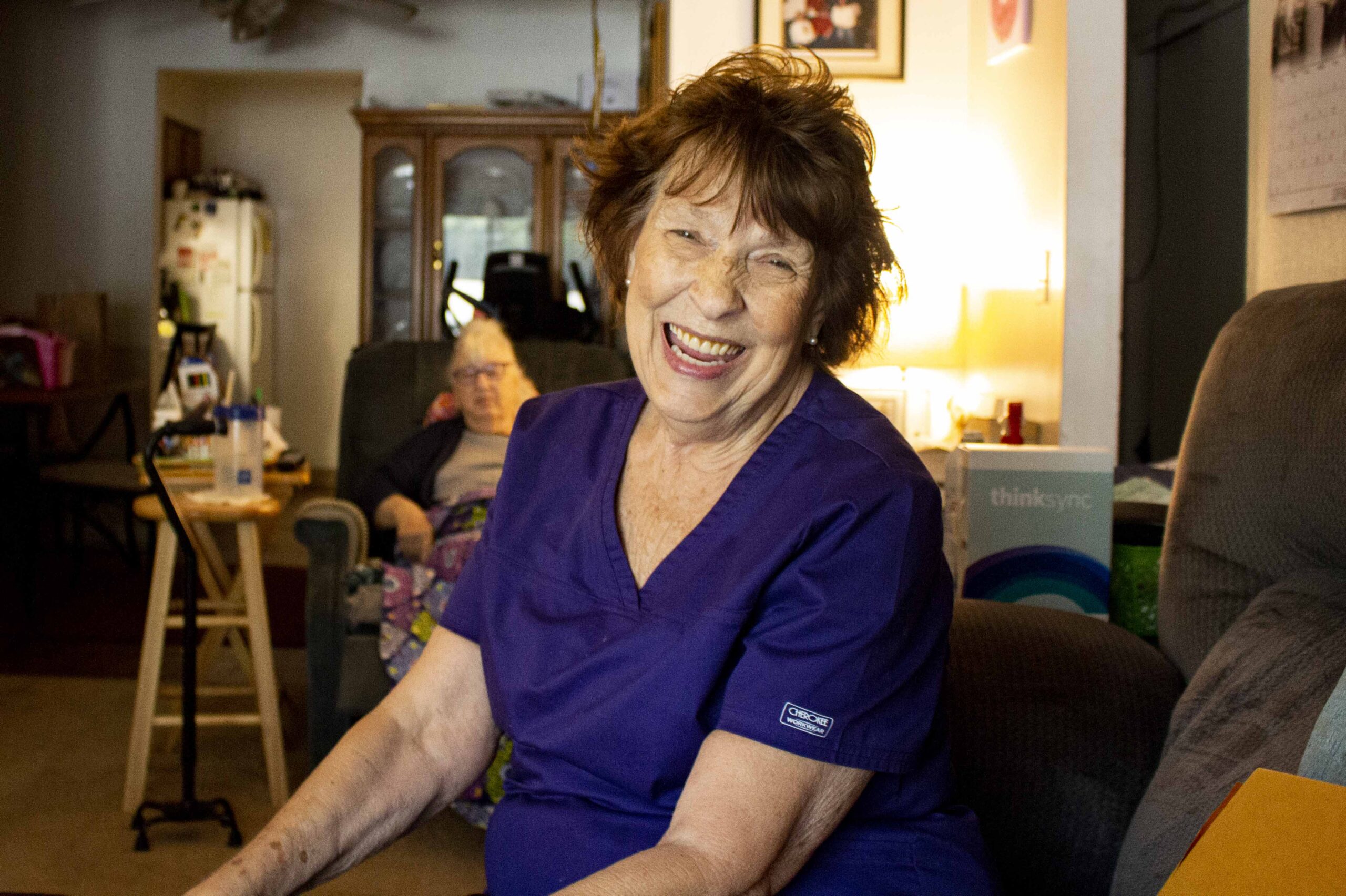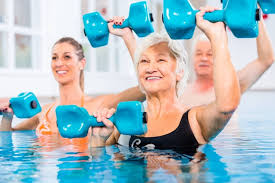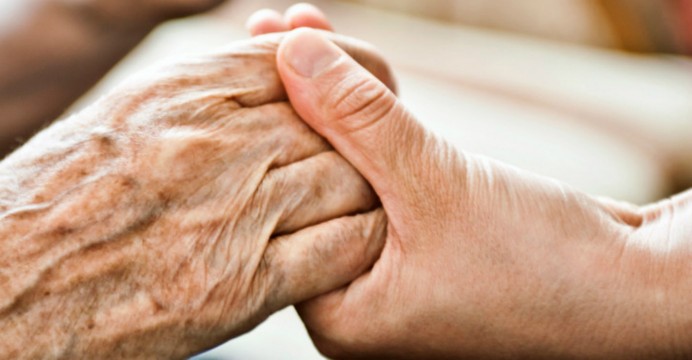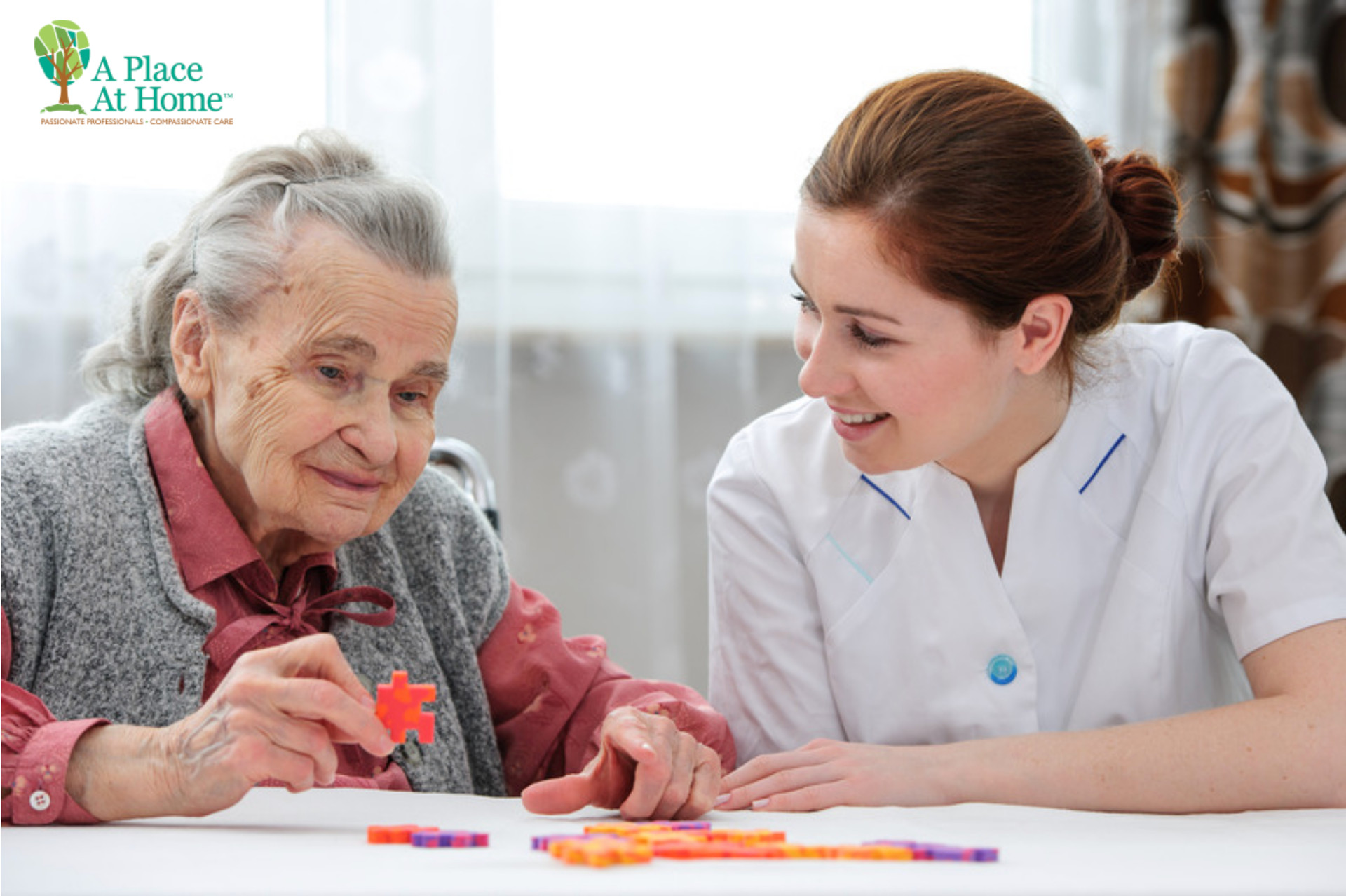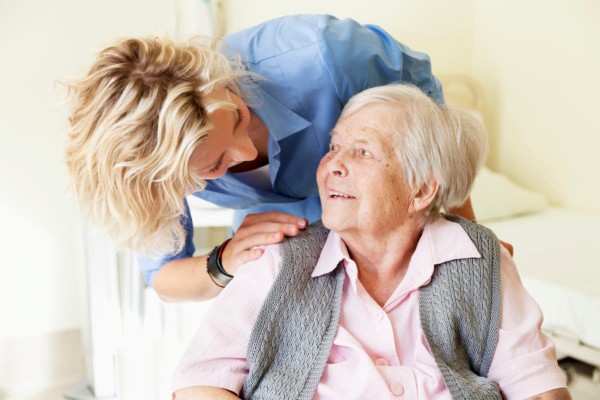Donna Bird named A Place At Home’s August Caregiver of the Month.
She recently became a caregiver with A Place At Home a couple of months back, but in that time, she has gone above and beyond to give her clients the best care possible. “What I love most about being a caregiver is the people I work with. All of them are sweet, sweet people,” said Donna.
Donna is from southwest Kansas where she was working on her Master’s Degree in Social Work. She said, “I was one semester away from being an RN. It really makes me better in the homes because I understand what I’m working with medically.”
Donna has been a caregiver for 27 years. She said one of the most touching moments in her career happened recently with a gentleman she was assigned to provide care to by A Place At Home.
“We really bonded. He went into hospice shortly after we met and from that point on, he let go. What was so beautiful through that whole thing was I knew he needed to see me one last time before he died. That’s just how close we were. The last day I went in there, I shaved his face really good with the razor, gave him a really nice sponge bath, I would talk to him and his eyes would open and he’d look directly at me so he understood what I was saying. I would always sit by his bed and put my hand on his so he knew he was never alone. It was very touching. When I left the next day he passed away. But he needed to see me one more time before he died.”
The family was extremely grateful that Donna came into his life, even if it was briefly. “His wife thought I was the best thing that ever happened to him. His daughter said I was an angel, as much as I helped her cope through this process. The card they sent me, what they said…I’ll save it for the rest of my life. I will never ever forget this family.”
Donna felt this connection and timing was a miracle. “The Lord put me there for that very reason.”
While the family expressed how important Donna was to them, she said the impact on her was equally moving, “They were thankful to me…but do you know what they did for me? There are no words to describe it. They thought I did a lot for them…but oh, what it did for me. There’s not enough words or tears that could ever tell anyone what it meant to me to be with him.”
Become A Caregiver
A Place at Home caregivers genuinely enjoy caring for others. Together, we work to provide each senior the opportunity to live their best life. Apply now or contact us to inquire about becoming a caregiver with us.

